The third game week of the 2019/20 season of the UEFA Champions League saw the top two teams in Group E battle it out at the Johan Cruyff Arena. Last seasons surprise semifinalists, Ajax, welcomed last seasons Europa League winners, Chelsea, for a fantastic showdown. Both managers have been hailed for their attractive playstyles and their ability to use homegrown and academy talent. In the end, Chelsea came on top with a 0-1 victory that sealed their place at the top of the group for now. This tactical analysis will use analysis to look at the tactics both teams employed and how Chelsea came on top in a very tight affair.
Lineups
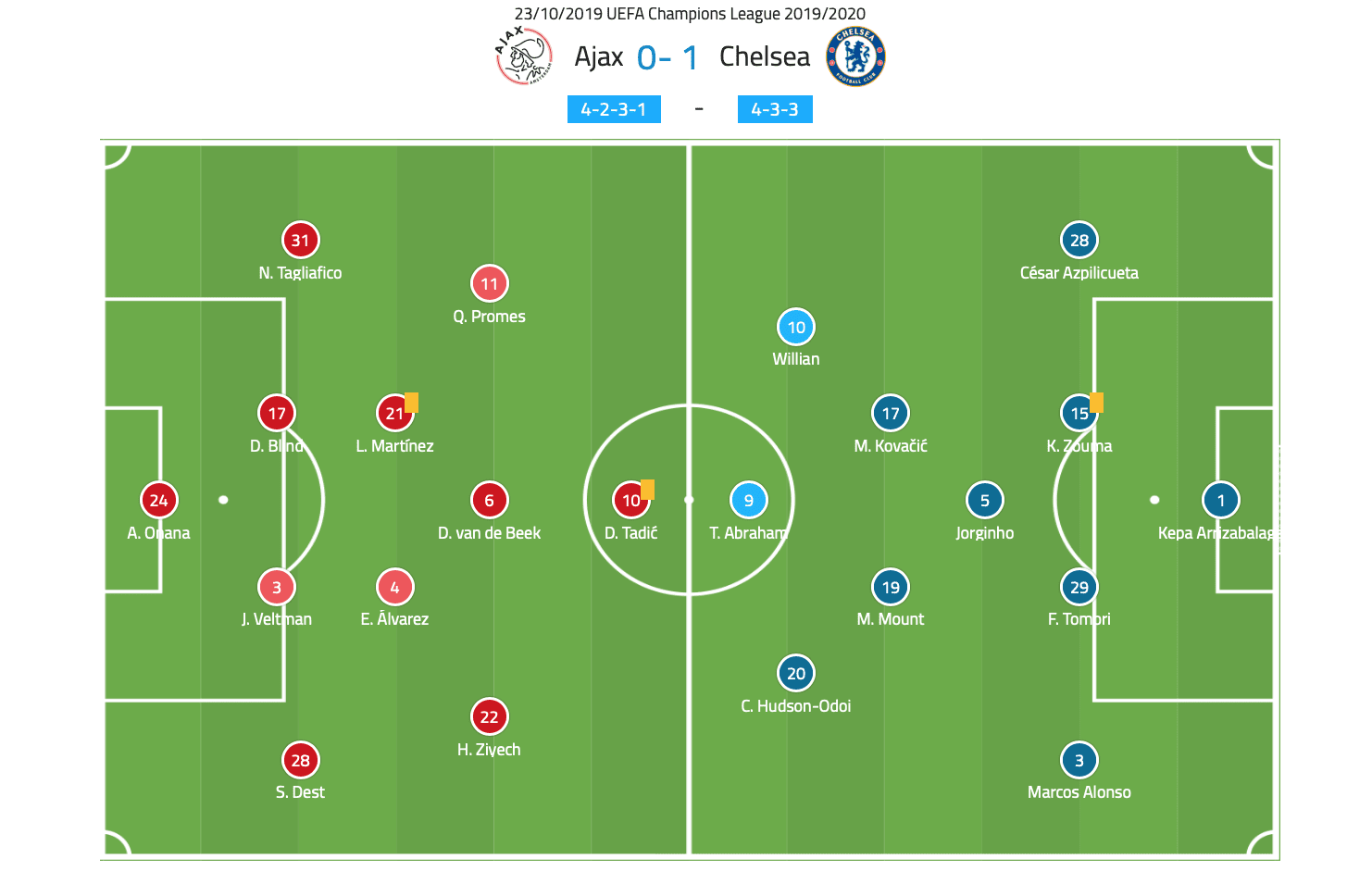
Ajax currently sit top of the Eredivisie and have been unbeaten so far in all competitions. It is fair to say that despite losing both Matthijs de Ligt and Frenkie de Jong, Erik ten Hag has still been able to get the most out of a very talented Ajax side. Last years semi-finalists lined up in a 4-2-3-1 formation. André Onana started in goal with a back four in front of him that consisted of Sergiño Dest, Joël Veltman, Daley Blind, and Nicolás Tagliafico. The double-pivot in midfield consisted of Edson Álvarez and Lisandro Martínez, with Hakim Ziyech, Donny van de Beek, and Quincy Promes situated in front of them. Dušan Tadić led the line as a lone striker up top. Ten Hag’s lineup changed significantly from the weekend against newly promoted RKC Waalwijk. He had played a 4-3-3 and had Klaas-Jan Huntelaar and Noussair Mazraoui start. RKC Waalwijk were promoted to the Eredivisie this season, and currently, sit bottom of the table. It was clear that Ten Hag was resting critical players for this matchup against Chelsea.
Frank Lampard named a relatively unsurprising starting XI for his third Champions League match as manager. His most-used formation in his managerial career so far has been a 4-2-3-1 (or some variation of it), however lately he has been using the 4-3-3 with this Chelsea side. Kepa Arrizabalaga’s efforts saw him keep a clean sheet with the help of a back four consisting of César Azpilicueta, Kurt Zouma, Fikayo Tomori, and Marcos Alonso. With N’Golo Kanté still regaining fitness from injury, Jorginho started in midfield, alongside Mason Mount and Mateo Kovačić. The starting front three contained a mix of youth and experience with Willian, Tammy Abraham and Callum Hudson-Odoi, as Lampard looked to get his second win as a manager in the Champions League. The one change that was made from the weekend win against Newcastle was Mateo Kovačić coming in for Ross Barkley, who suffered an injury at St. James’ Park
First Half Deadlock
Both fans and neutrals alike were quite excited for this match because of the playstyle that both managers have employed to their respective teams, and while both sides were quite tentative and cautious of the other’s strengths, there was some great attacking play on display.
Chelsea started pressing from the front immediately to put pressure on Ajax, a rarity for a team playing away from home in the Champions League. It was clear that the pressing from the front was unexpected from Ajax as Onana and the backline struggled to get the ball out of their half.
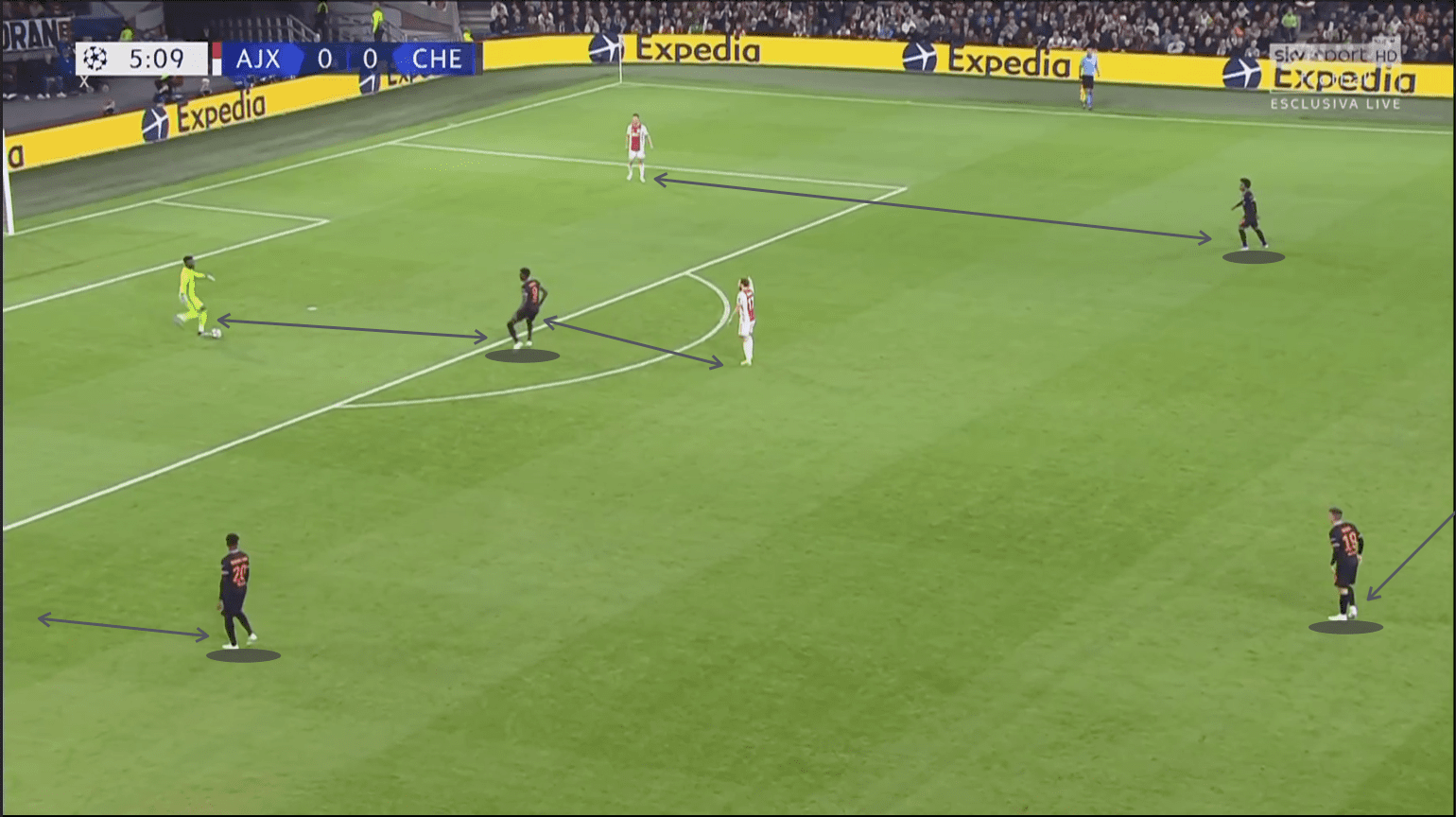
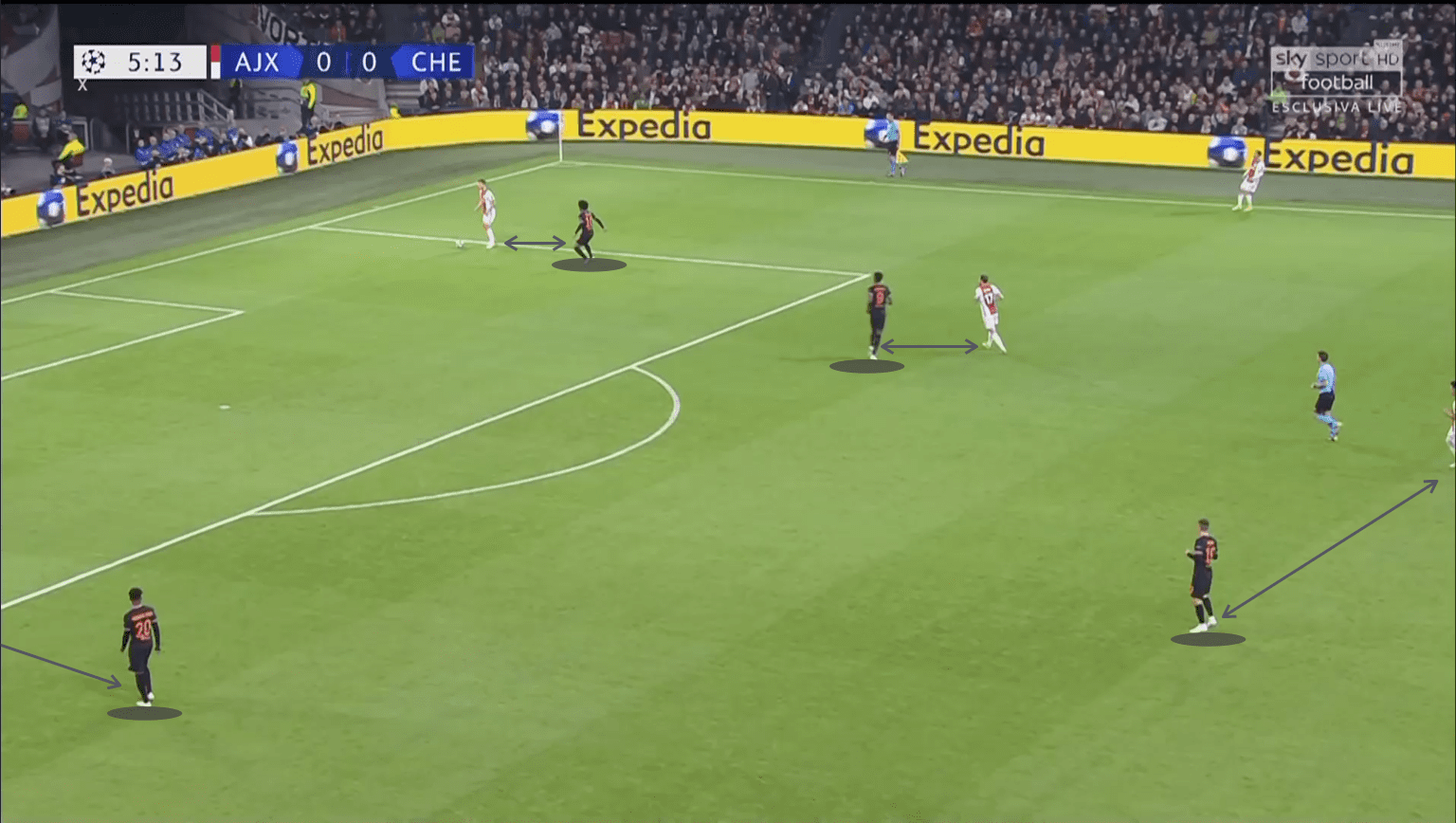
While Chelsea were unable to score from this tactic, they were able to win nine corners throughout the match, and most were from regaining possession of the ball in the final third.
Ajax’s plan going forward was to switch the ball from flank to flank constantly. This allowed the ball to keep moving at a quick space obviously, but as well forced Chelsea to stretch their shape, and create gaps, which Ajax were hoping to exploit. Several chances were created from this tactic, but a lack of sharpness in the final third prevented them from scoring.
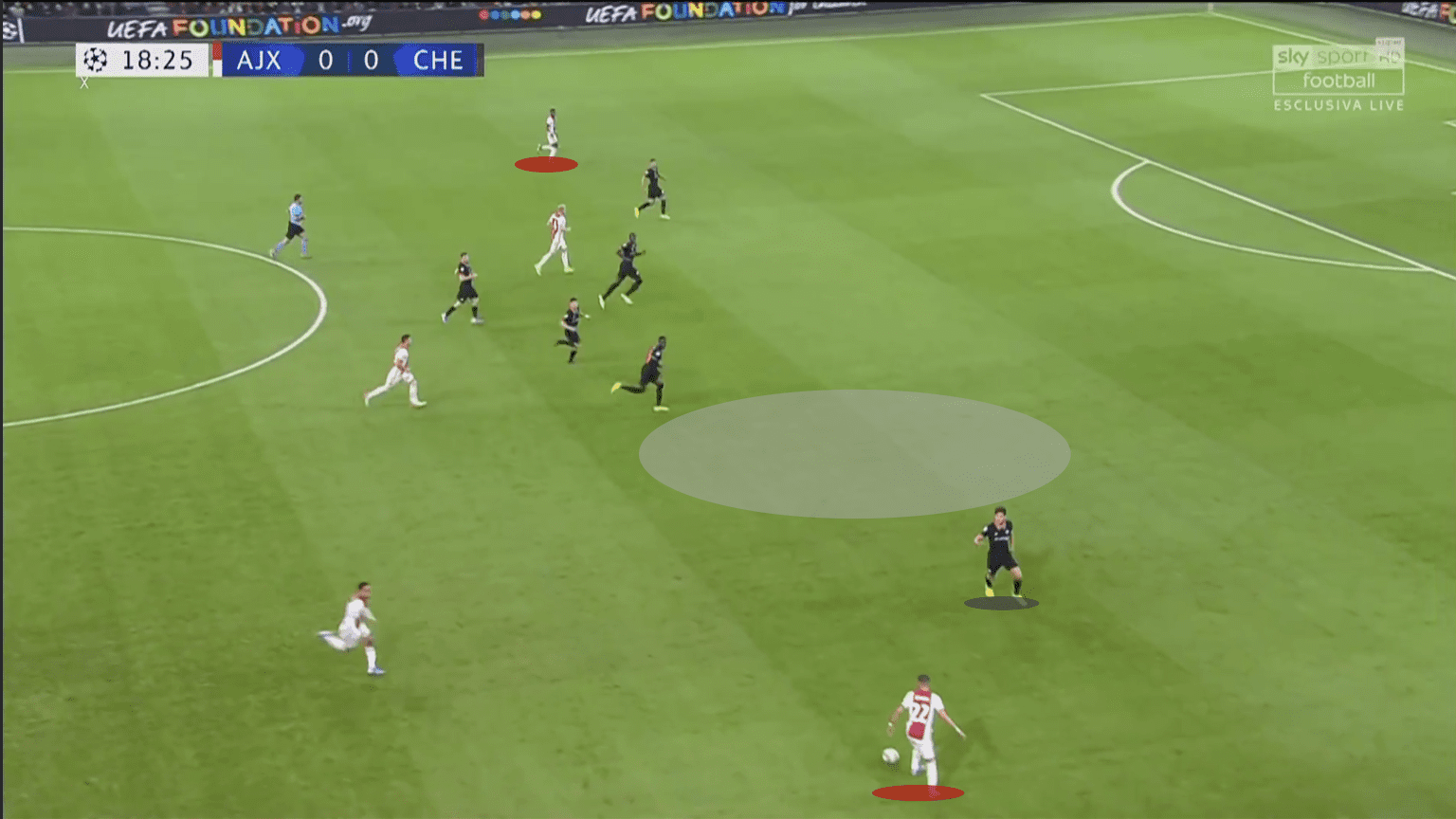
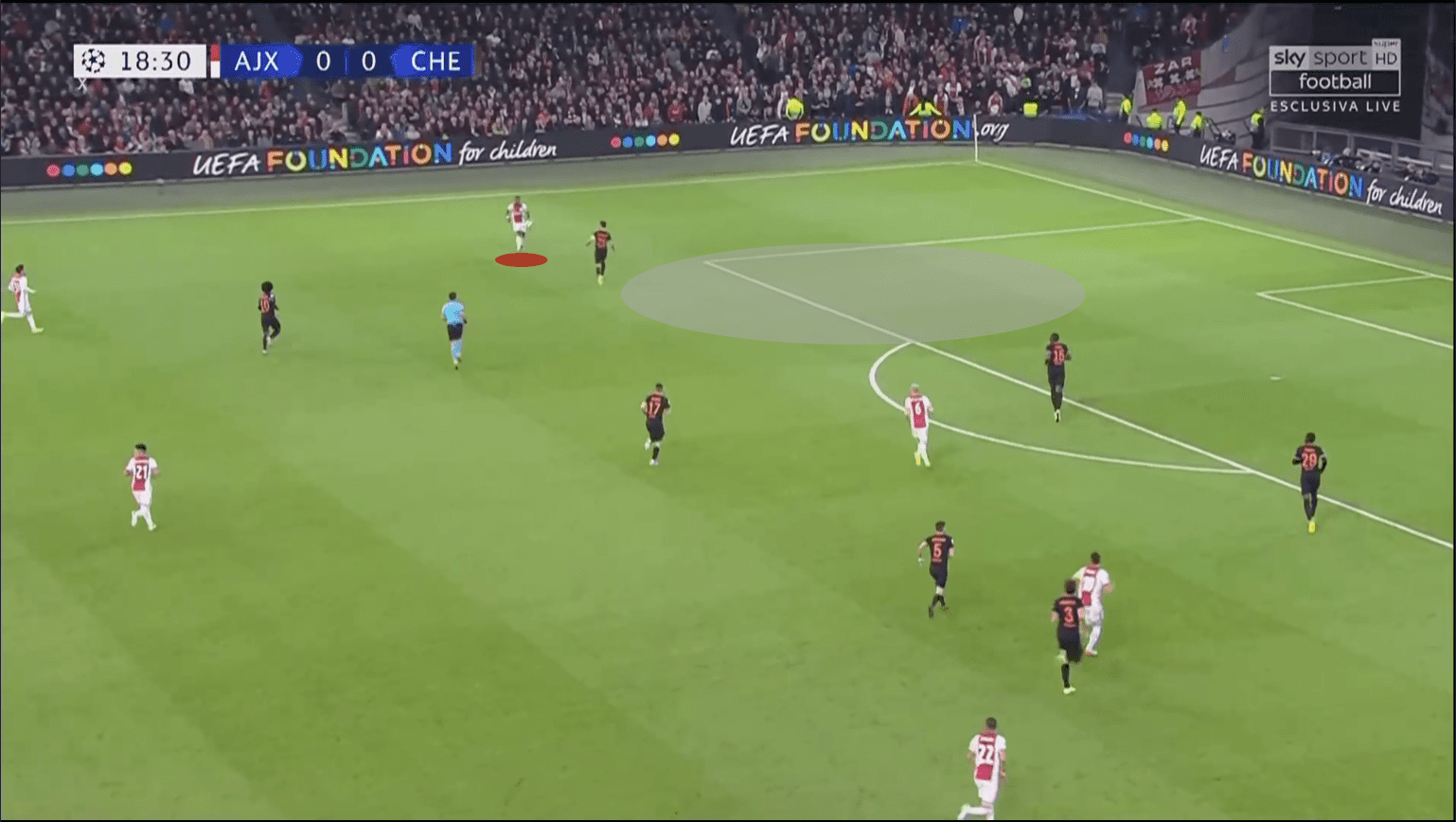
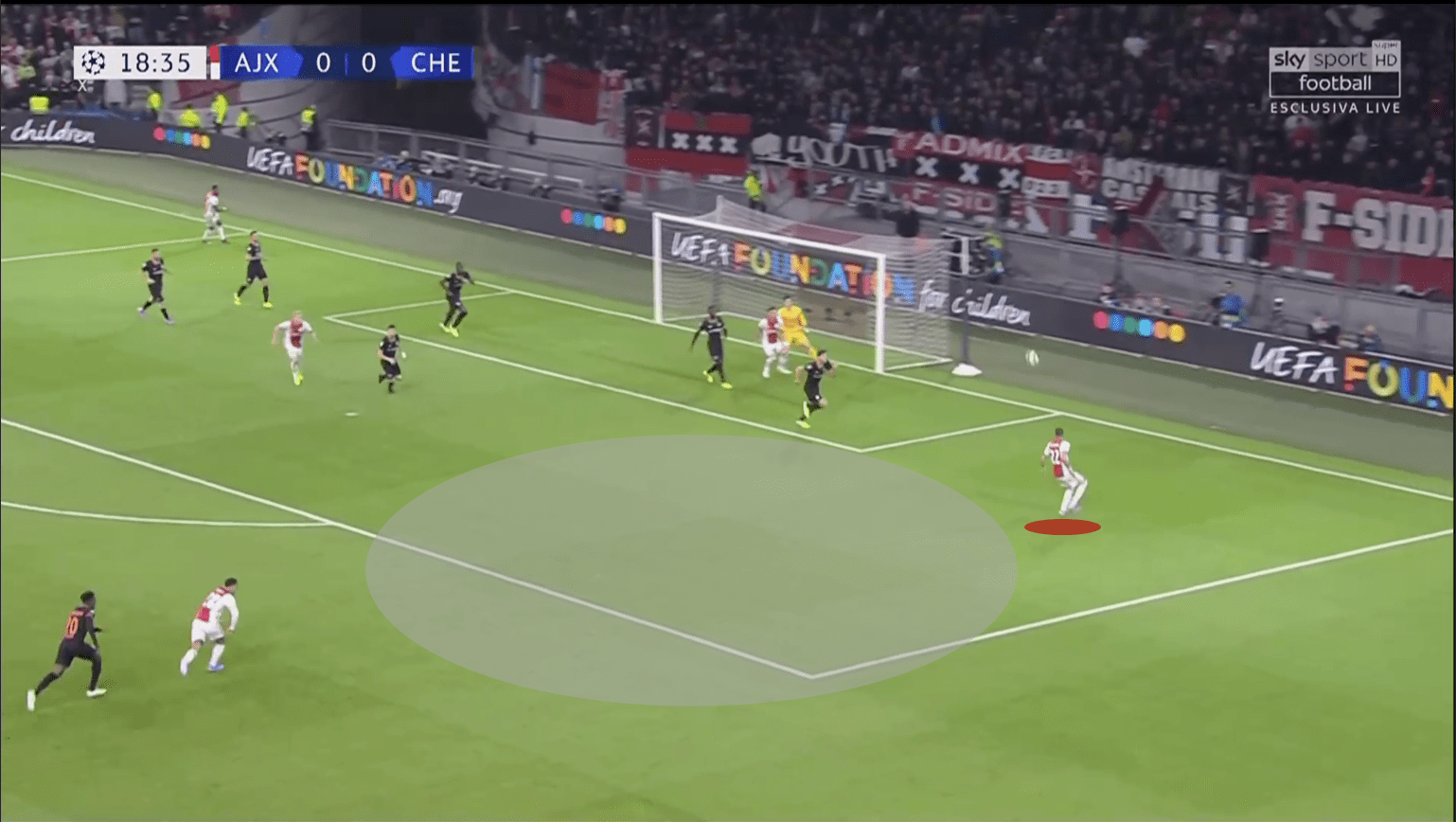
Defensive Shapes
Like mentioned above, even though both teams were fluid in attack, they were equally as cautious of each others threat. Both sides were very strong defensively, hoping not to concede.
Ajax without possession were very daring, as they would press exceptionally quickly on the spot to gain possession back quickly. It was usually the wide winger and the wide midfielder’s job to win it back (Promes and Martínez on the left, and Álvarez and Ziyech on the right). If it worked, they would be able to win the ball back in such dangerous areas and catch Chelsea out of position. This allowed them to create several chances from turnovers.
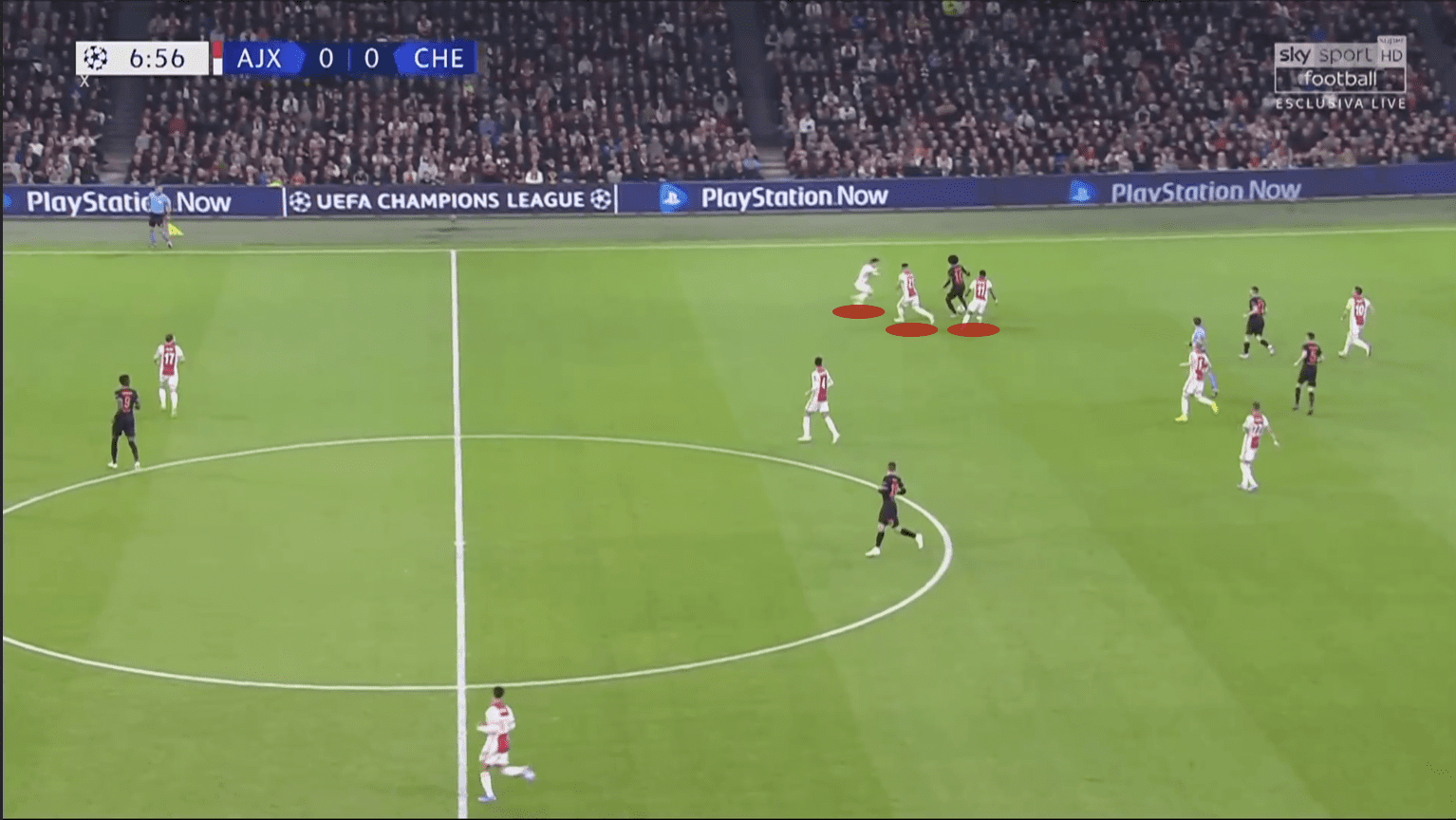
However, if the press didn’t work, Ajax’s extremely high line were put under immense pressure, and they had to get back quickly.
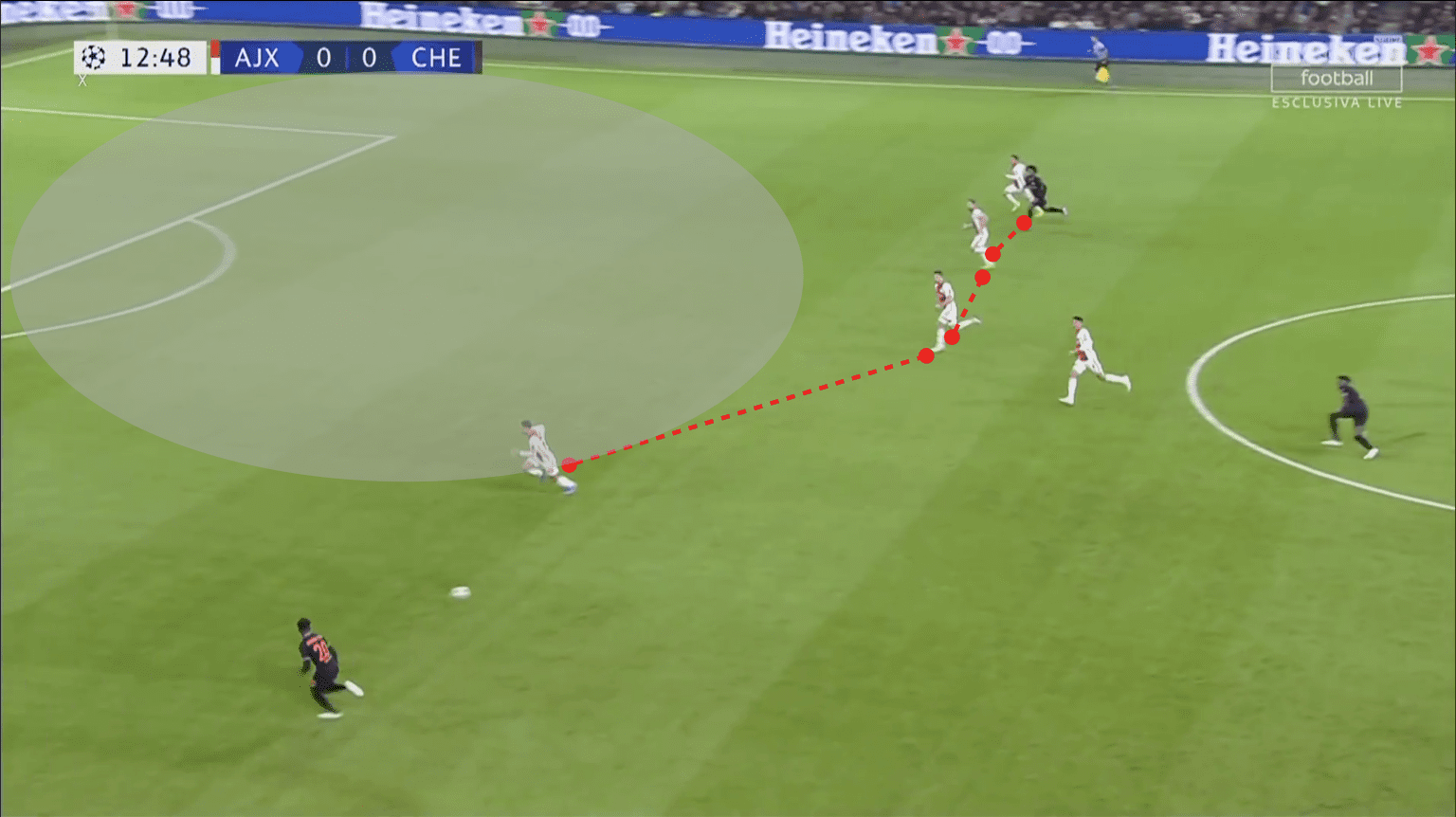
Ajax’s tactic in this situation was to be compact. They allowed Chelsea to have the spaces on the wing and focused on not letting any shots in, nor any play through the middle.
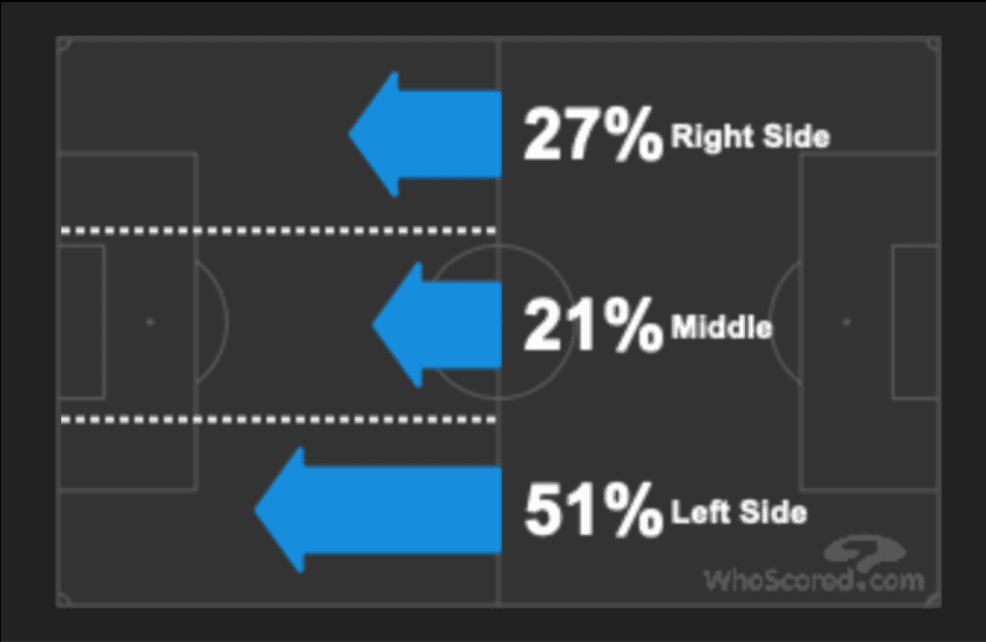
Chelsea, on the other hand, usually got back into a defensive shape quite quickly after possession was overturned. Without possession, they defended in a 4-4-2 shape. The two forward players, usually Abraham and one of Hudson-Odoi and Mount, would press the Ajax player with the ball, hoping to force a mistake and allow their team to counter. The difference between this press and the one Ajax was deploying is that Chelsea were doing it in their own half. If the press did not work, Chelsea would relatively still not be under threat.
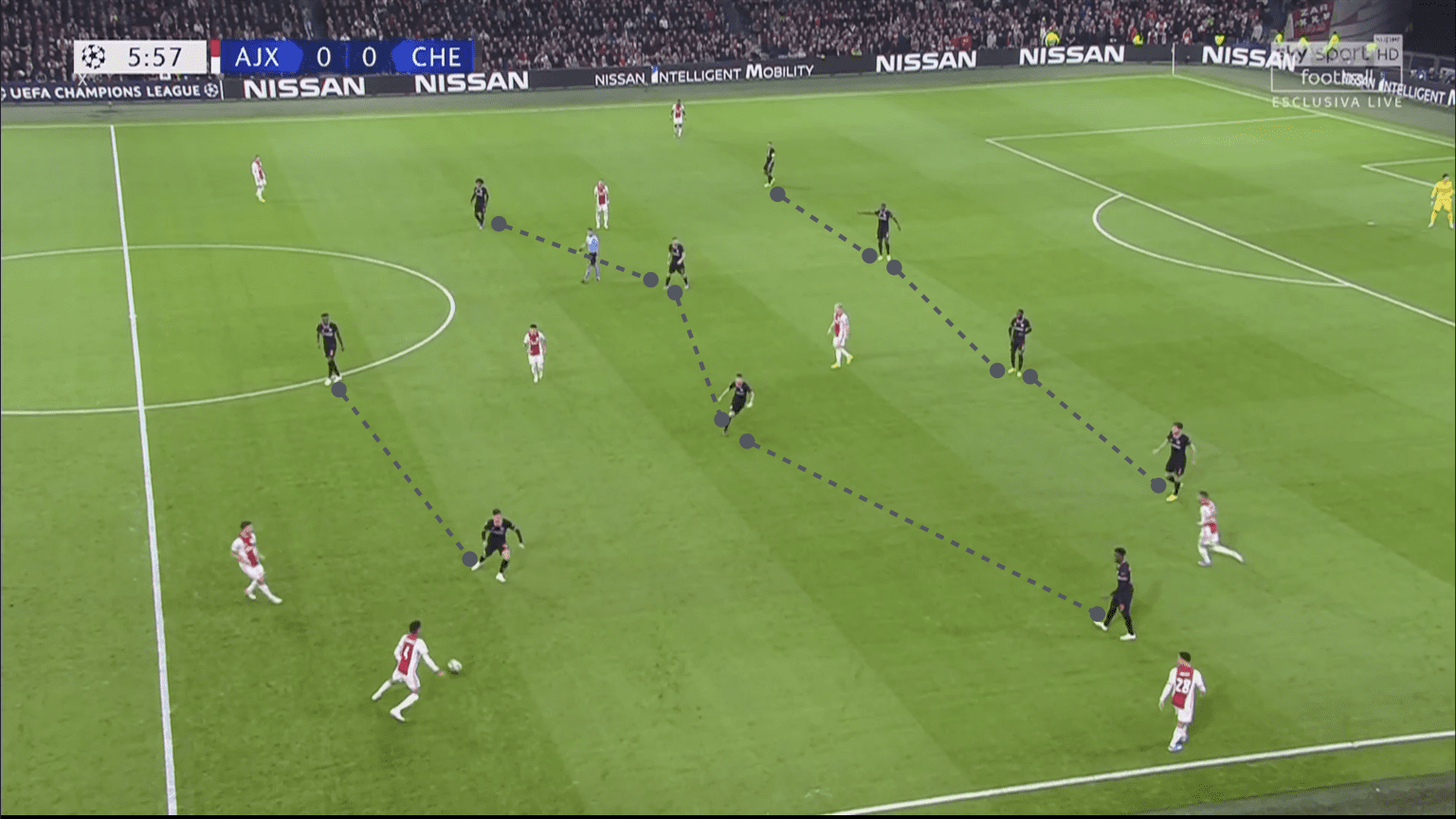
If the press didn’t work, Chelsea would have to rely on their backline, specifically their central defenders, to win individual duels before Ajax were able to get into their rhythm of quick interplay passing in the final third.
Both Zouma and Tomori played excellent matches and contained Ajax’s front four together really well. Between them, the pair had 13 clearances, four interceptions, two blocked shots, a ground duel win percentage of 70%, and an aerial duel win percentage of 70%.
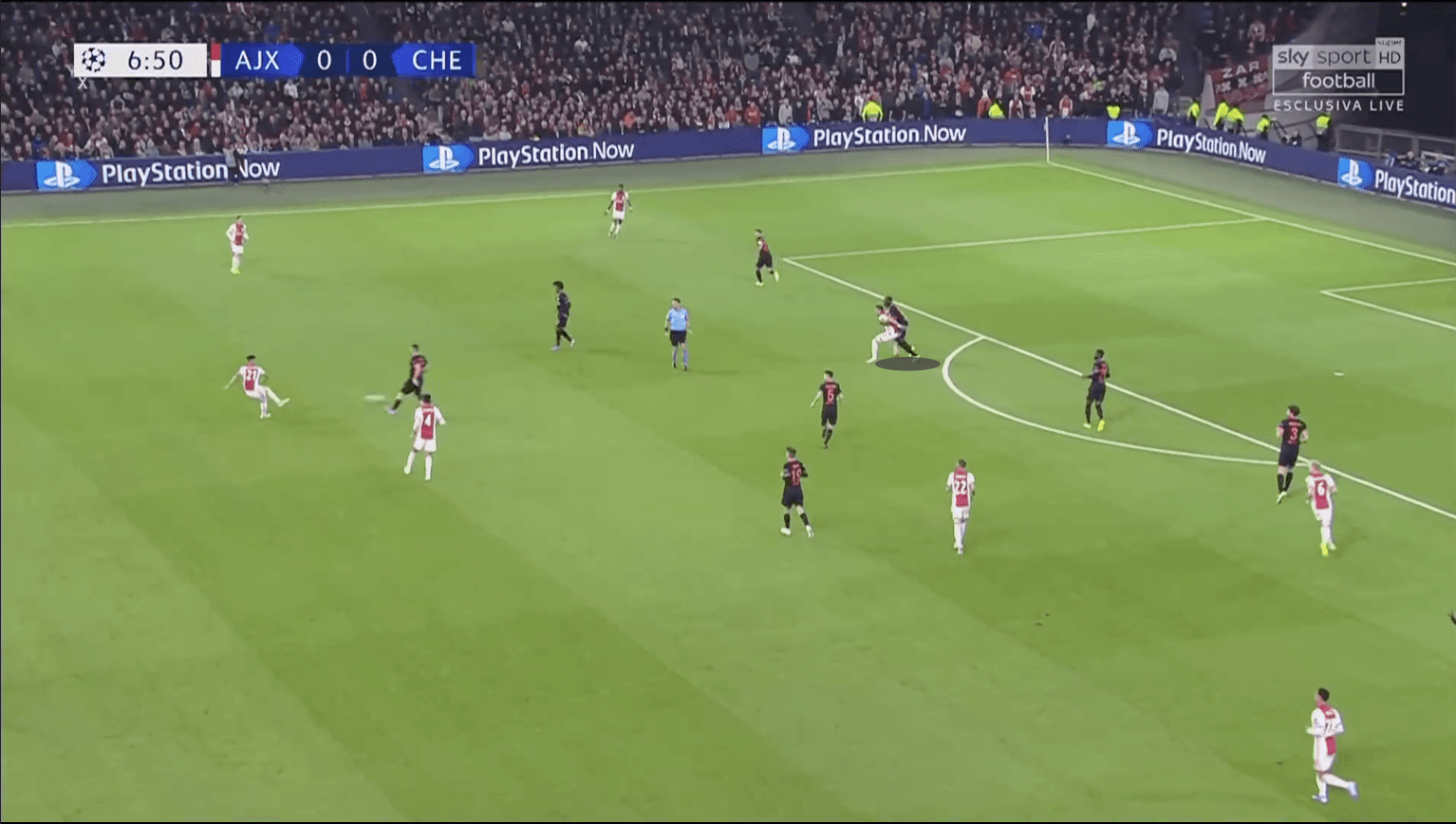
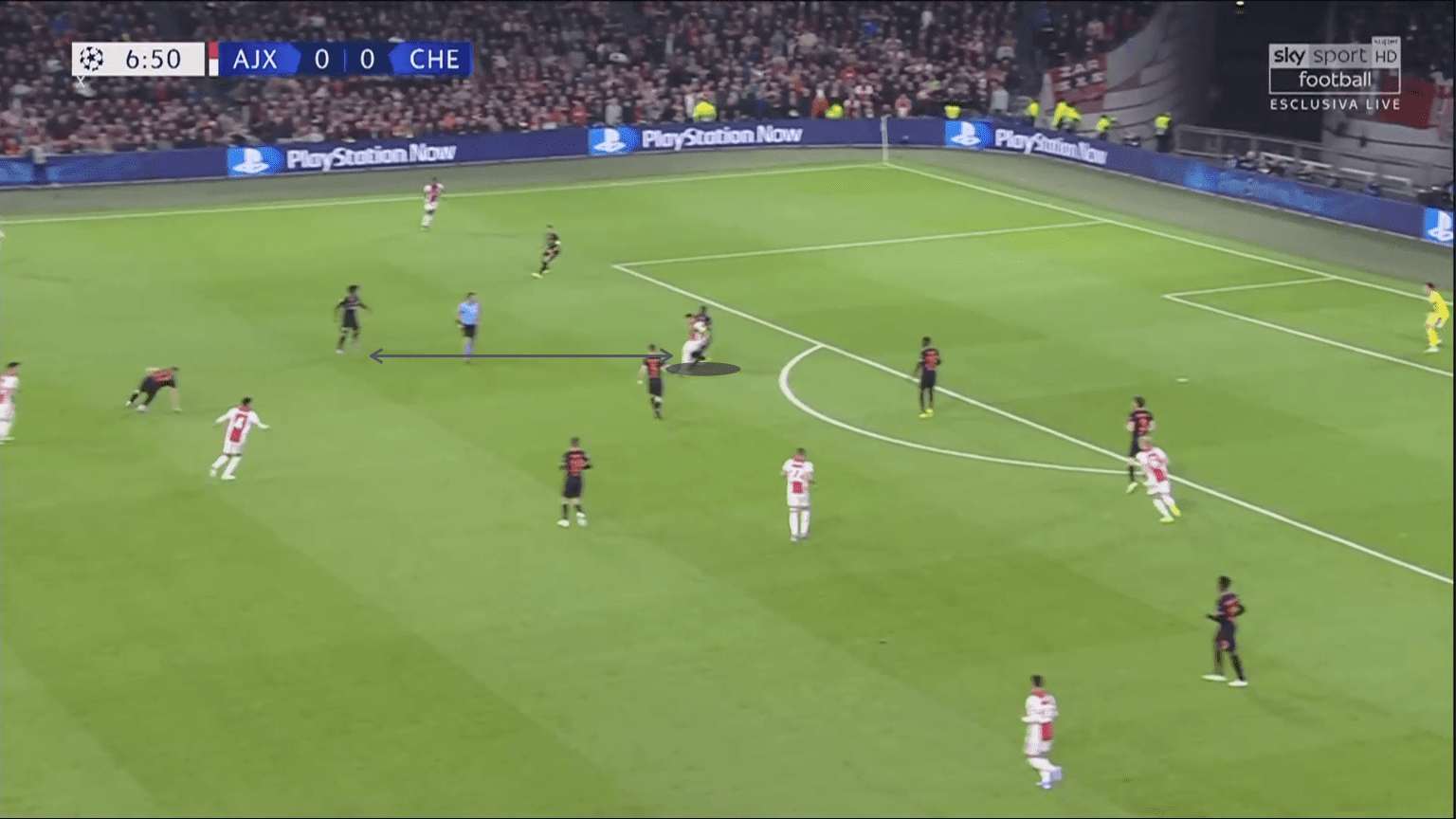
Game-Changing Substitutions
The clock was ticking, and it looked more and more likely that the points would be shared in Amsterdam. However, two substitutions made by Lampard allowed Chelsea to take control of the game and score the one goal in the match.
Christian Pulisic came on in the 66th minute, and Michy Batshuayi came on in the 70th for Willian and Abraham respectively. Both were on the pitch for very little time, but their energy and fresh minds troubled the Ajax defenders, as their tired legs were coming up against fresh ones. Both played more on the left side, targetting a slower, and exhausted Dest who was dealing with Hudson-Odoi’s counter-attacks all night.
Pulisic completed all of his passes on the night, making two key ones into the box, with one of them being the assist to the goal.
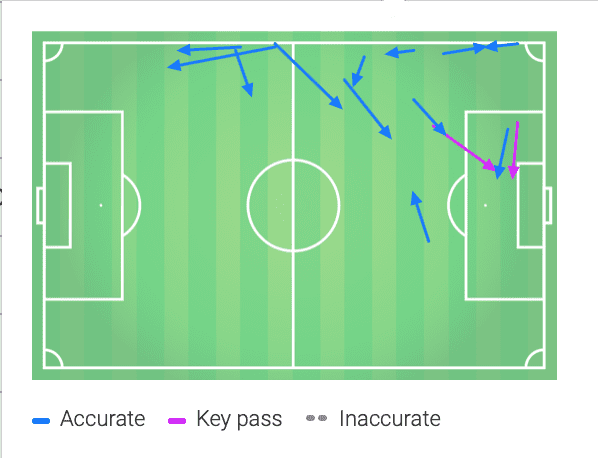
Batshuayi, on the other hand, was incredibly forward-thinking. He played less than 20 minutes, but had four shots on goal, with three on target (one of them being the goal), and one on the crossbar. He came on knowing he had to score for his club.
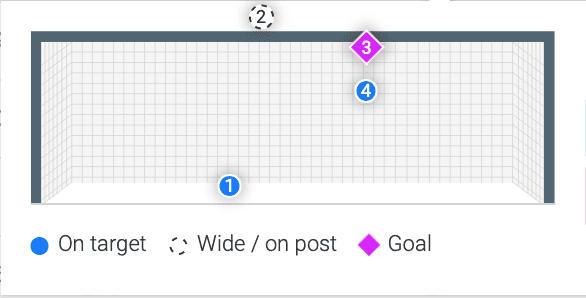
Last-Minute Scramble
Ten Hag was desperate for a win, if not, at least, a late equaliser, mainly because it was a home game. He decided to change formations from a 4-2-3-1 to a 4-3-3. Instead of having two holding midfielders, he instead chose to go all out in attack. He subbed off two midfielders in Martínez and Álvarez for two forwards, Siem de Jong and Huntelaar. Fundamentally, for the last ten minutes, Ajax were playing with six forward-thinking players.
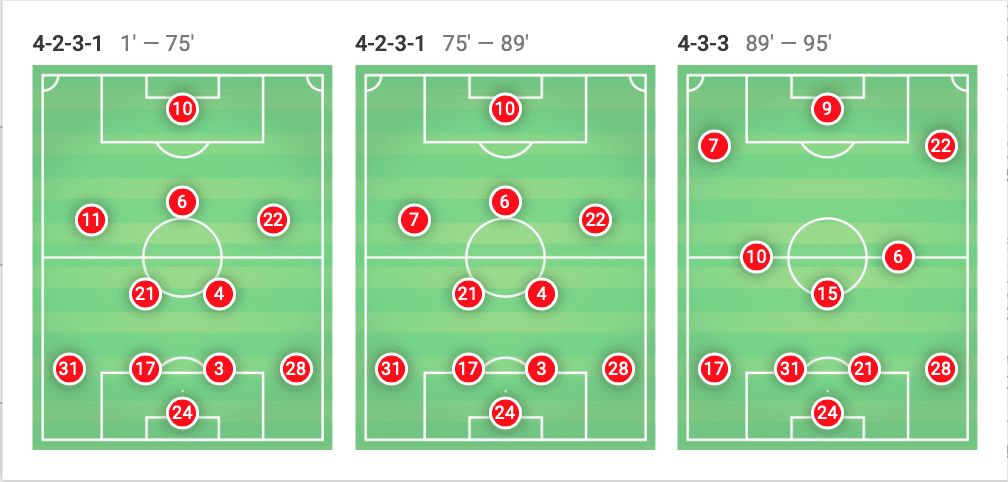
While a good idea, in theory, the lack of midfielders made Ajax lose control. They were unable to handle the ball at all, and have a good run of possession to actually score the equaliser, let alone a winner. Throughout the match, possession was pretty even with Ajax at 51.93% and Chelsea at 48.07%. However, as soon as Chelsea scored, Ajax’s possession percentage was under 40% until the end of the match.
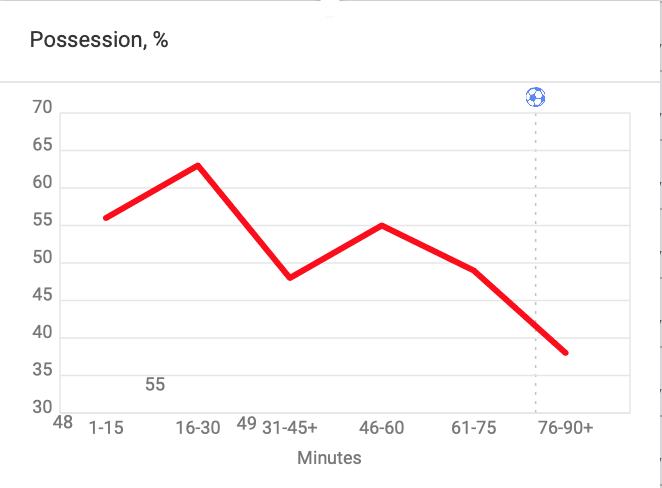
Conclusion
Ajax will be disappointed with the result, primarily because of how close the sides were in quality on the night. Unless a vast upset occurs, both teams will likely go through to the round of sixteen. However, Lampard’s genius substitutions will have Ten Hag looking for revenge at Stamford Bridge, hoping his side can top the group and get an easier draw in the next round.

If you love tactical analysis, then you’ll love the digital magazines from totalfootballanalysis.com – a guaranteed 100+ pages of pure tactical analysis covering topics from the Premier League, Serie A, La Liga, Bundesliga and many, many more. Buy your copy of the October issue for just ₤4.99 here





Comments